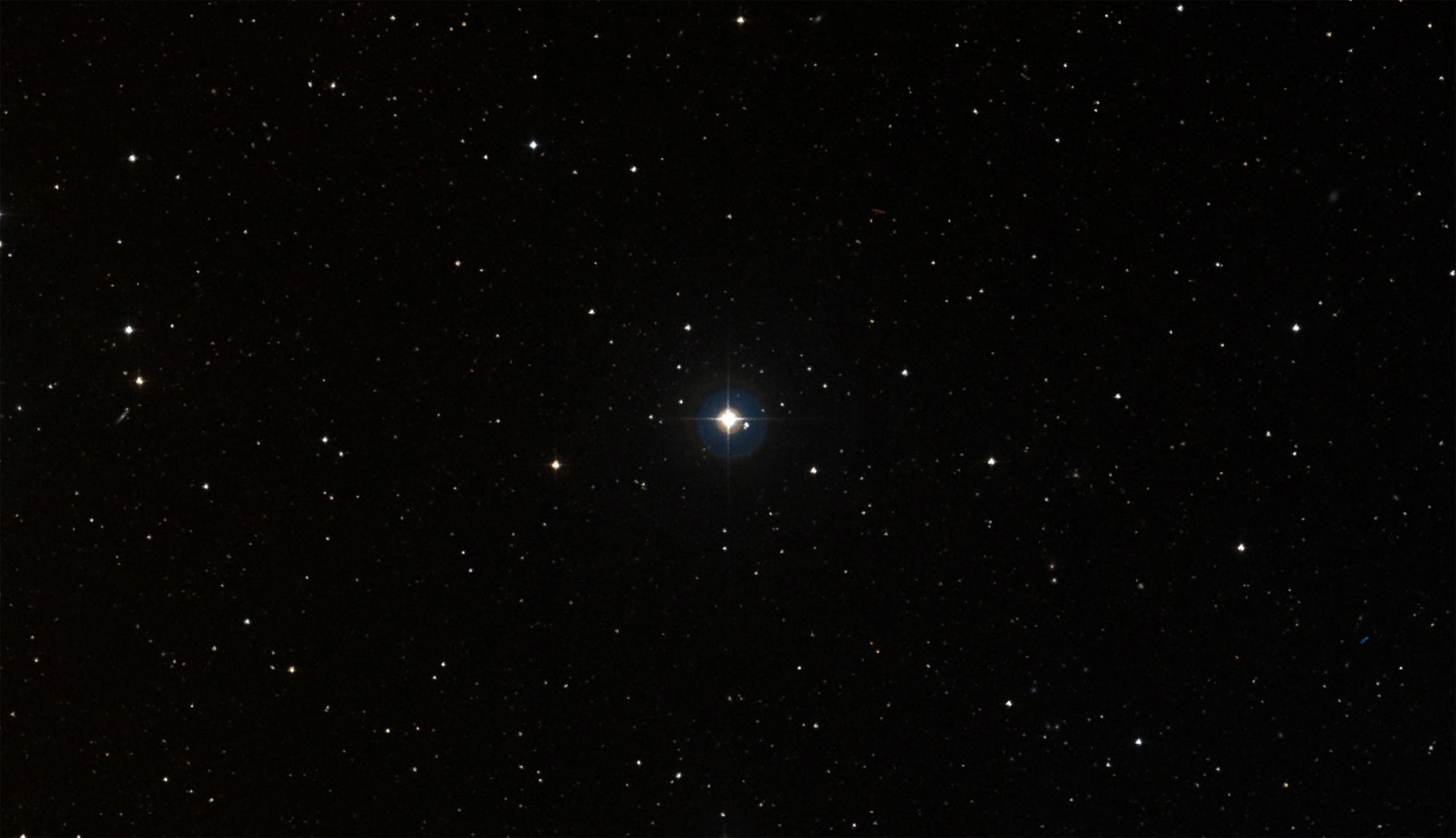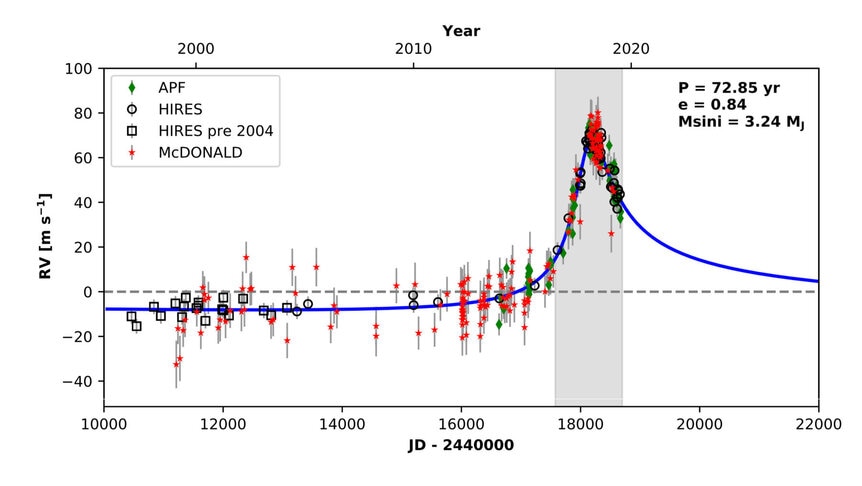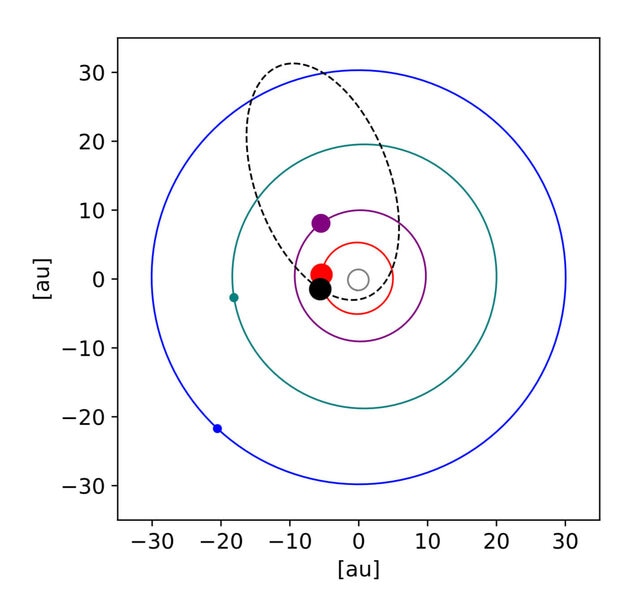Create a free profile to get unlimited access to exclusive videos, sweepstakes, and more!
An exoplanet dive bombs its star

Now that astronomers have bagged more than 4,000 exoplanets — alien worlds orbiting alien stars — we're starting to see ones that are really weird. Massive planets close in to their stars, planets with two or even three stars, maybe even ones with moons.
And some that aren't just weird. They're eccentric.
I mean that literally. Eccentricity is an astronomy term for how much an object’s orbit deviates from a circle. It's originally an old math term to describe an ellipse. An eccentricity of 0 is a perfect circle, and the ellipticity gets more pronounced as the eccentricity gets higher (up to a value of 1; at exactly 1 you have a parabola, and if it’s >1 it's a hyperbola).
Earth's orbit has an eccentricity of < 0.02. The most eccentric planet in our solar system is Mercury, with an eccentricity of 0.205; even Pluto's wildly eccentric orbit has a value of just 0.244.
Astronomers have just discovered an exoplanet with an orbital eccentricity of 0.84. Holy wow. It gets as close to its parent star as about 440 million kilometers (roughly where the asteroid belt is in our solar system) and as far as 5 billion kilometers — farther from its star than Neptune gets from the Sun!
The planet is called HR 5138 b. Its host star (HR 5138, of course) is quite a bit like the Sun, actually. It's a G0 star, so it's only a little bit bigger than the Sun and about 1.5 times the Sun's mass. Interestingly, it's old, about 7.7 billion years, three billion years older than the Sun. It's just a hair over 100 light years away, and is maybe just barely visible to the unaided eye in the constellation of Virgo if you look at it from an extremely dark moonless site (it has a magnitude of 6.3 if you like the tech specs).
The astronomers who found the planet have been monitoring HR 5183 for 22 years now (!), using various telescopes, including the 10-meter Keck, a 2.7-meter 'scope at McDonald Observatory in Texas, and a 2.4-meter at Lick Observatory. They've been taking high-resolution spectra to look for a planet using the reflex velocity method.
In a nutshell, a planet orbits a star due to the star's gravity. But the planet has gravity too, so the star moves in response to the planet's motion, so we call that its reflex velocity. The amount the star's velocity changes depends on the mass of the planet and how close it gets, but the way the star's velocity changes with time also depends on the shape of the planet's orbit. A circular orbit gives a nice sine curve to other star's velocity, but if the planet's orbit is really eccentric, you'll see very little change for a long time when the planet is far away, then a rapid increase as the planet drops down and then zips past the star.
This is all measured by looking at the star’s spectrum, its light divided up into very narrow colors. As the star moves toward us the spectrum gets blueshifted, and when it moves away it gets redshifted. Normally these shifts are small and the spectra noisy, but that’s not the case for HR 5183.
Yikes! That huge spike is classic reflex velocity from a highly eccentric planet. The star has a normal velocity toward the Sun of a few kilometers per second (from its motion around the galaxy). Then, in 2018, yowza. When they saw the sudden increase in the star’s velocity they started taking more observations, and got a lot of information about the planet as it zipped past the star.
The minimum mass of the planet is a little over 3 times Jupiter's mass. It might be more; the angle from which we see the orbit can affect the velocity seen (if we see the orbit face-on then there's 0 reflex velocity measured, and if we see it edge-on it's maximized; there's a trigonometric sine dependence on that, which in turn affects the mass measured). The orbital period (the year) of the planet is about 74 years, though there's considerable uncertainly to that (it could reasonably be between 50 and 120 years). The shape of the curve is what gives the eccentricity of the orbit, and that's how they found it was 0.84.
So the next question is why is the orbit so elongated? It's likely that another massive planet orbiting the star got too close, and their mutual gravity affected each other. The astronomers looked and found no other massive planet in the data, though. Sometimes the encounter between two planets can be so strong that one of the planets is ejected from the system, and I strongly suspect that’s what happened here. It's possible something like that may have happened in our own solar system 4 billon years ago!
There is another star nearby, HR 5182, a lower-mass orange dwarf, but it's a staggering 2.2 trillion kilometers distant — almost a quarter of a light year! It may very well be bound with HR 5183 (in other words, the two orbit each other on a painfully long timescale), but it's way too far away to affect the planet.
They only caught this planet because they happened to be observing it when it was near periastron, closest approach to the host star. Most of the time, it's too far to see any effect. However, it's possible that as the planet pulls away from the star it might be visible through direct imaging. It'll be some time before we can do that given the long orbit, decades at least. But that's pretty cool.
It's also possible that its effect on the star might be seen in data from the Gaia observatory, which measures the motions of stars on the sky. As the planet moves around the star the star itself physically moves; it's a very small amount, but it might be possible to see it in the Gaia data when the next big release comes in a few years. I'll have to keep my eyes open for that.
I'm digging this. As we discover more exoplanets, we find more that distinguish themselves from the crowd. Observationally, ones like this are interesting because they bridge the gap between planets we can see in RV data and ones that can be seen directly in images. Physically it's interesting because really eccentric planets have unusual origin stories, and learning about them puts our own solar system into context.
Plus, c'mon, it's just cool. I like that, too.

















